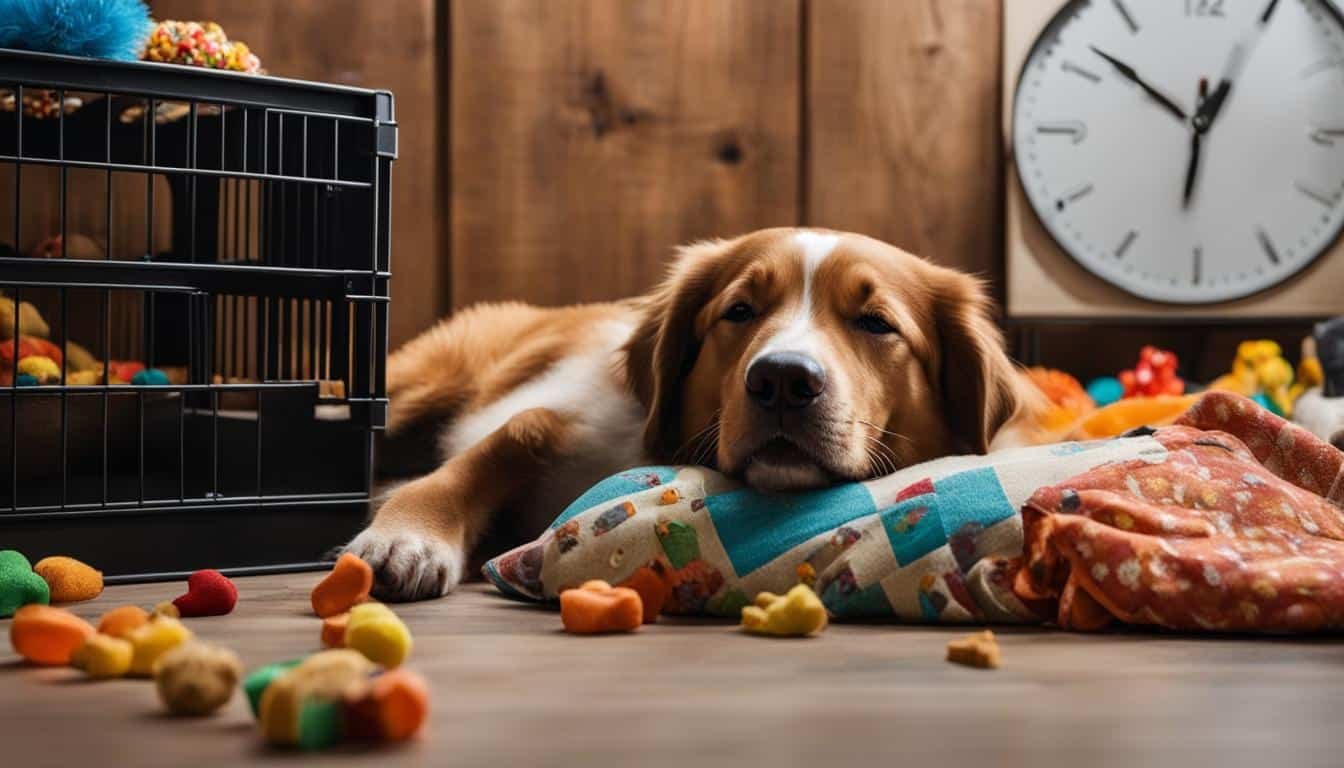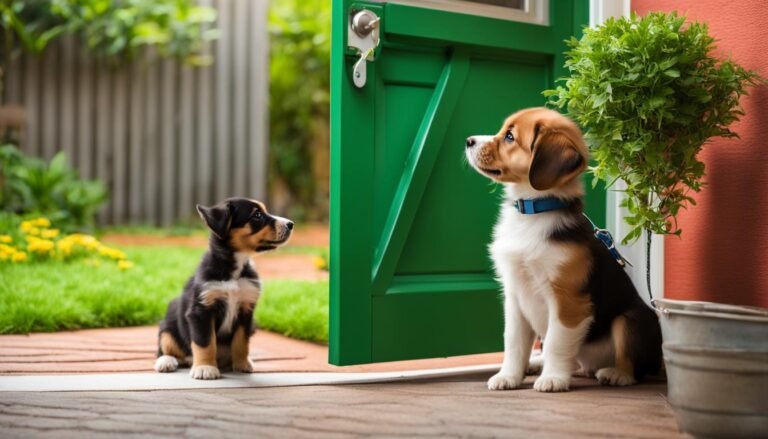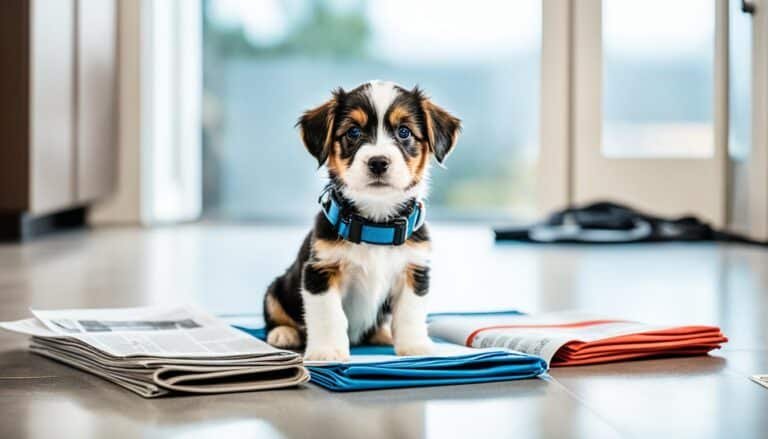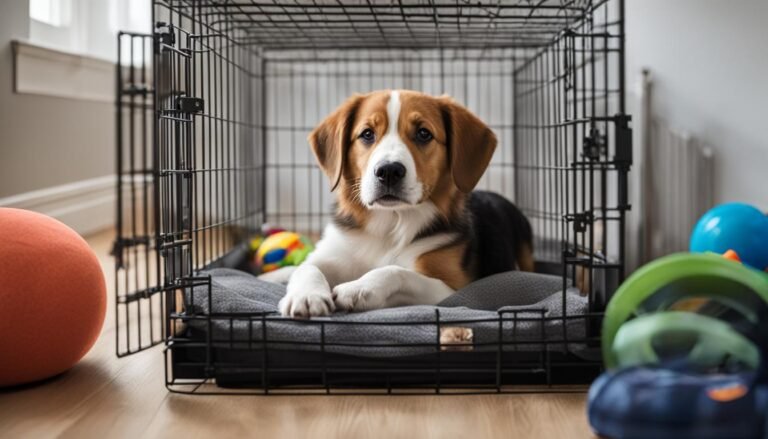How to Crate Train a Dog Fast
Have you ever wished you could train your dog to be calm and well-behaved in record time? If you’re like me, you’ve experienced the frustration of coming home to chewed-up furniture or accidents on the carpet. But fear not! I’m here to tell you that there’s a solution – crate training. It’s a tried-and-true method that can help you and your furry friend establish a strong bond and create a harmonious home environment. Whether you’re a new dog owner or looking to improve your current training methods, this article will provide you with the crate training tips, dog crate training, and fast crate training methods you need to succeed.
The Importance of Proper Crate Training
Proper crate training is essential to ensure that your dog sees the crate as a safe and comforting space. Crate training basics involve creating a positive association with the crate and using effective crate training techniques. The crate should never be used as a form of punishment, but rather as a place where your dog can relax and feel secure.
One of the first steps in successful crate training is choosing the right crate size for your dog. The crate should be large enough for your dog to stand up, turn around, and lie down comfortably. This ensures that your dog has enough space to move around and feel at ease in the crate.
Introducing your dog to the crate gradually is another important aspect of effective crate training. Start by placing the crate in a central area of your home and make it inviting by using treats or toys. Encourage your dog to explore the crate and reward them for any positive interaction with it. This helps establish a positive association and builds their confidence in using the crate.
During the crate training process, it’s crucial to use reward-based training techniques. This involves rewarding your dog with treats or praise when they enter the crate and demonstrating positive behavior. By consistently rewarding your dog for their cooperation and progress, you reinforce the idea that the crate is a safe and enjoyable space.
Remember, crate training takes time and patience. Each dog learns at their own pace, so it’s important to be patient and persistent throughout the process. By following these effective crate training techniques and focusing on creating a positive experience for your dog, you can successfully crate train them and provide them with a comfortable and secure space of their own.
Selecting the Right Crate for Your Dog
When it comes to crate training, selecting the right crate for your dog is crucial for their comfort and success. The crate should be a place where your furry friend feels safe and secure. To ensure a positive crate training experience, here are some important factors to consider:
- Crate Size: The size of the crate is of utmost importance. It should be spacious enough for your dog to stand up, turn around, and lie down comfortably. A cramped crate can make your dog feel stressed and anxious, while an excessively large crate may not provide the cozy den-like feeling that dogs naturally seek.
- Crate Type: There are different types of crates available, such as plastic crates and collapsible metal pens. Plastic crates provide a more den-like environment and may be preferable for dogs who prefer a cozy space. Collapsible metal pens offer visibility and airflow, making them suitable for dogs who may feel more comfortable with an open view.
- Rental or Adjustable Crates: If you have a growing puppy, you may consider renting a crate or using an adjustable crate. This allows you to modify the crate size as your puppy grows, saving you from purchasing multiple crates during their growth stages.
By carefully considering these factors, you can select a crate that meets your dog’s needs and provides them with a comfortable space to call their own. Remember, the goal is to create a positive crate training experience, and the right crate plays a significant role in achieving that.

The Steps of Crate Training
Crate training is a step-by-step process that requires patience and consistency. To successfully crate train your dog, follow these dog crate training steps:
- Introduce your dog to the crate: Start by placing the crate in a central area of your home, such as the living room. Make the crate inviting by putting a soft blanket or dog bed inside. Encourage your dog to explore the crate by placing treats or toys near the entrance.
- Create a positive association: Feed your dog their meals near the crate to associate it with positive experiences. This will help your dog see the crate as a safe and comfortable space.
- Gradually close the crate door: Once your dog is comfortable going in and out of the crate, start closing the door for short periods while they are inside. Release them before they show any signs of distress. Gradually increase the time your dog spends in the crate with the door closed.
- Stick to a crate training schedule: Establish a routine for crate training. Take your dog out for bathroom breaks before and after they spend time in the crate. Use consistent feeding times and play sessions outside of the crate to create a schedule for your dog.
- Monitor your dog’s comfort: Pay attention to your dog’s behavior and body language during crate training. If they show signs of distress or discomfort, take a step back and proceed at a slower pace. Adjust the crate size if necessary to ensure your dog has enough space to move comfortably.
- Be patient and consistent: Crate training takes time, so be patient with your dog’s progress. Consistency is key to reinforcing positive crate training habits. Celebrate small achievements along the way to keep your dog motivated.
By following these crate training steps and maintaining a positive and patient attitude, you can successfully crate train your dog and provide them with a safe and comforting space.
Overcoming Challenges in Crate Training
While crate training can be a beneficial process, it’s important to be aware of certain challenges. Crating caution is necessary to prevent your dog from feeling trapped or frustrated. Here are some potential problems to keep in mind:
- Punishment: Never use the crate as a form of punishment. Your dog should associate the crate with positive experiences and feelings of comfort.
- Extended Periods: Avoid leaving your dog in the crate for extended periods without exercise or human interaction. Dogs need regular breaks for bathroom breaks, exercise, and socialization.
- Puppies: Puppies under 6 months old should not be crated for more than a few hours at a time. They have limited bladder control and need frequent potty breaks.
- Whining and Separation Anxiety: Some dogs may experience whining or separation anxiety during crate training. It’s important to address these issues with patience and positive reinforcement techniques.
By being aware of these challenges and employing the right strategies, you can overcome them and ensure a successful crate training experience for your dog.
Creating a Positive Crate Training Experience
To ensure a positive crate training experience for your dog, there are several strategies you can implement that will accelerate the process and make it quick and efficient.
One approach is to use positive reinforcement techniques, such as treats or toys, to reward your dog for entering and staying in the crate. This will help them associate the crate with positive experiences and create a sense of comfort and security.
In addition to rewards, you can incorporate crate games to make the crate a fun and engaging place for your dog. This can include hiding treats or toys inside the crate for them to discover or playing interactive games near the crate to create a positive association.

Gradually increasing the time your dog spends in the crate is also essential. Start with short intervals and gradually extend the duration as your dog becomes more comfortable. Remember to provide your dog with appropriate bathroom breaks and playtime outside the crate to meet their needs and prevent any accidents or restlessness.
Consistency is key in crate training. Use the same cues and routines each time you crate your dog, and ensure that everyone in the household follows the same training approach. This will help your dog understand the expectations and accelerate their learning.
By following these strategies and providing a positive crate training experience, you can quickly and effectively train your dog to become comfortable and relaxed in their crate.
Patience and Persistence in Crate Training
Crate training your dog requires patience and persistence. It’s important to understand that every dog learns at their own pace, and some may require more time to feel comfortable in the crate. This is why it’s crucial to remain calm and consistent throughout the crate training process.
When crate training, it’s essential to stay positive and reward your dog for their progress. This will encourage them to associate the crate with positive experiences. Whether it’s offering treats, praise, or their favorite toy, these rewards can go a long way in creating a strong bond and making crate training a success.
It’s important to remember that crate training is not a quick fix. It takes time and dedication to effectively crate train your dog. By approaching the process with patience and persistence, you’re setting yourself and your pet up for long-term success. So keep calm, stay consistent, and trust the process.






